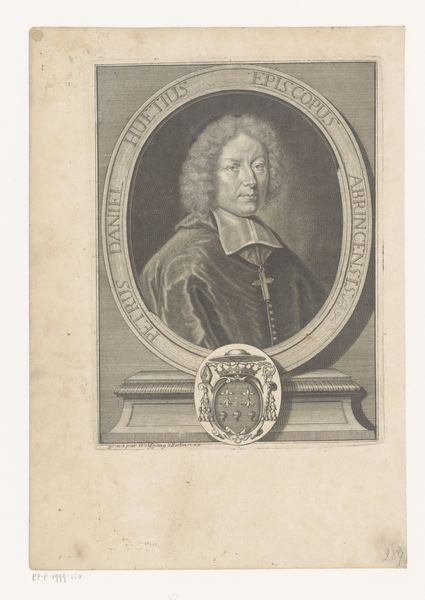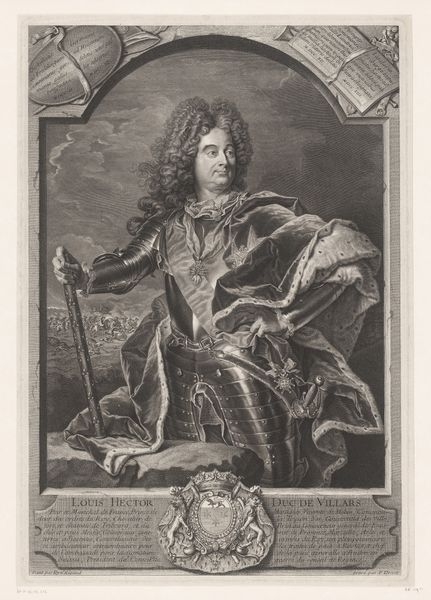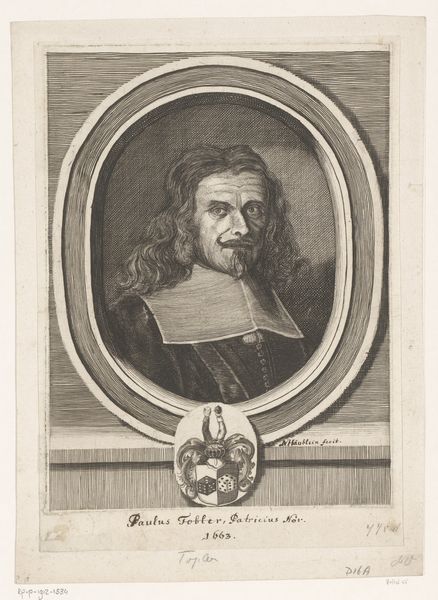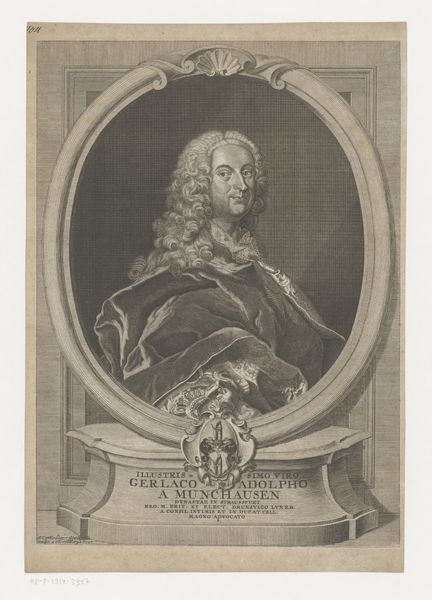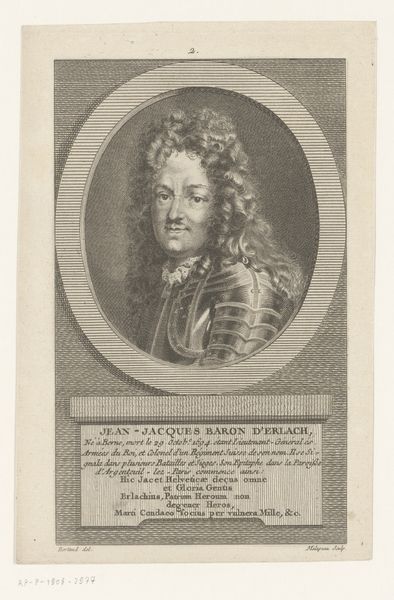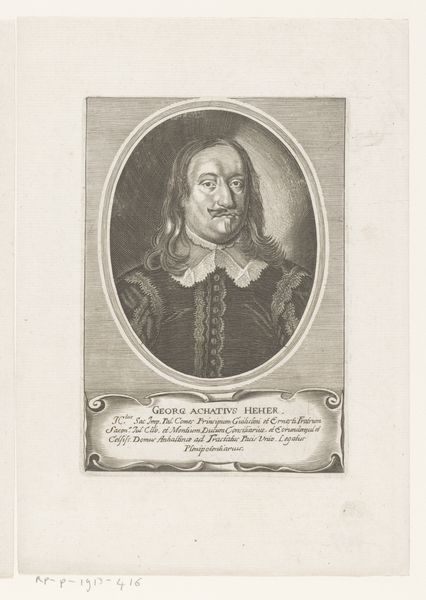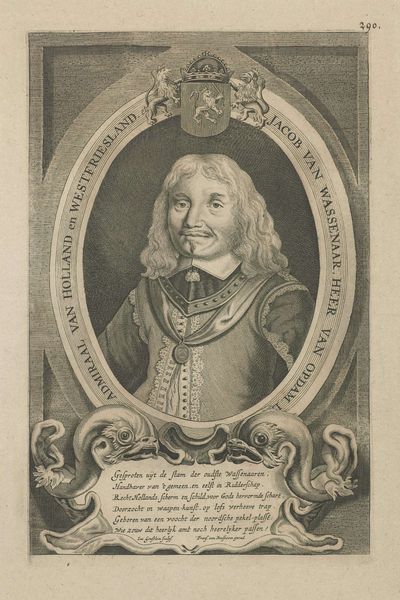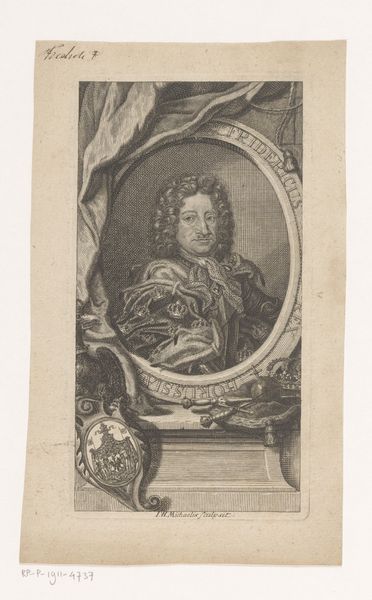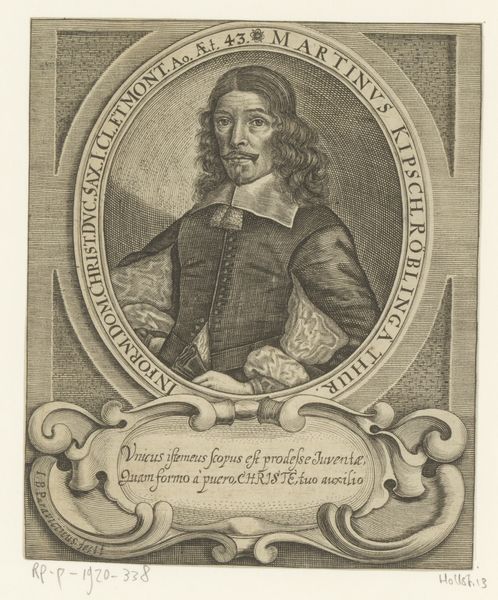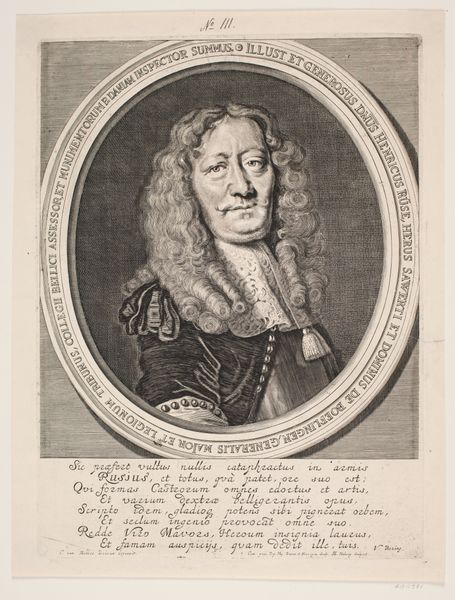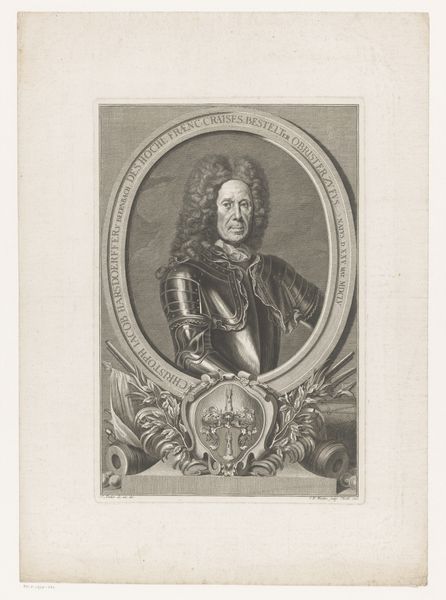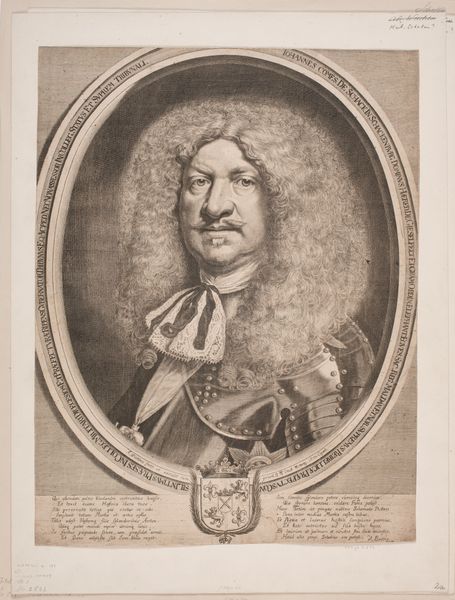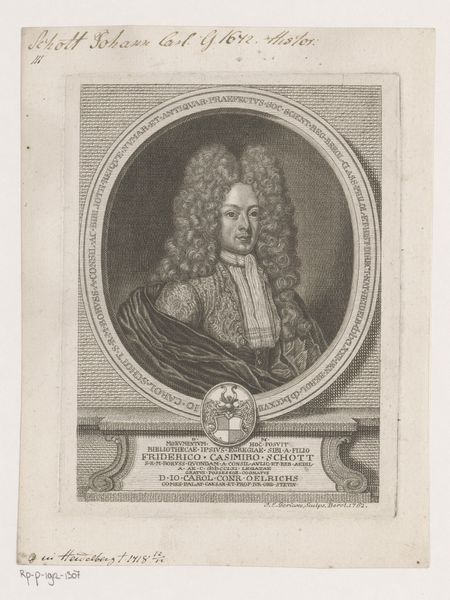
engraving
#
portrait
#
baroque
#
old engraving style
#
caricature
#
portrait drawing
#
academic-art
#
engraving
Dimensions: height 192 mm, width 146 mm
Copyright: Rijks Museum: Open Domain
Curator: This is Jean Langlois's "Portret van Giovan Battista Nani", an engraving from between 1659 and 1712. Editor: It’s interesting how detailed the engraving is, especially considering the time it was made. It really highlights Nani's status and perhaps idealizes him. What can you tell me about the engraving process and its context here? Curator: Well, engraving, as a printmaking process, democratized image production. This wasn't some unique, unattainable painting. Consider the labor: the skilled artisan meticulously incising lines into a metal plate. Each line represents a deliberate act, a transfer of power dynamics. The inscription around the portrait reinforces Nani's status, sure, but it also underscores the engraver's role in constructing that image and distributing it for consumption. How does this accessibility and dissemination affect your reading of the portrait? Editor: I guess I was focusing on the person portrayed, Nani, but now I see how the engraving itself becomes important. Does the act of reproducing his image change his power or the perception of his power? Curator: Precisely! Think about the economics involved: commissioning the portrait, the labor costs of the engraver, the potential market for prints. Suddenly, this isn't just about commemorating Nani; it's about production, distribution, and access to imagery. This is an early form of mass media! Who controlled the access and the image itself, the subject or the engraver? Editor: That’s fascinating. It shifts my perspective from just seeing a historical figure to understanding the material processes that shaped his image and influence. Thank you. Curator: My pleasure. Seeing the object as a product, not just a representation, is key.
Comments
No comments
Be the first to comment and join the conversation on the ultimate creative platform.
